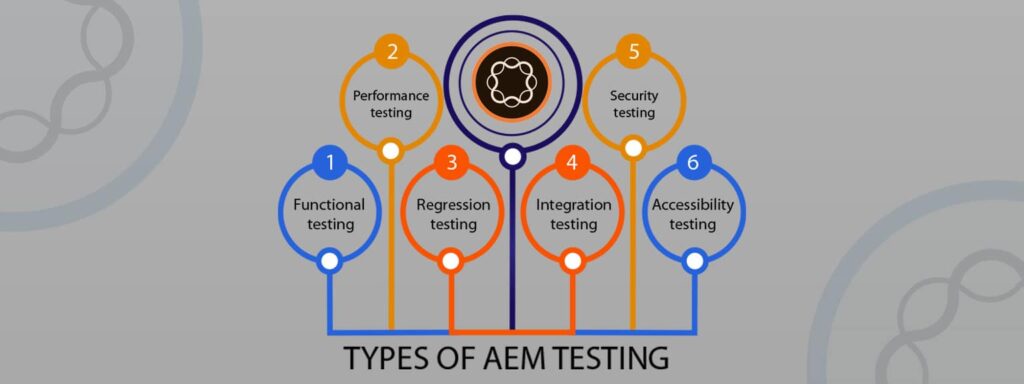
A new era of enterprise digital experience management has begun with Adobe Experience Manager (AEM) as a cloud service. With its cloud-native architecture and advanced capabilities, AEM empowers businesses to easily deliver personalized and engaging content to their audience. However, as organizations embark on implementing AEM as a cloud service, careful planning and implementation become imperative.
This blog will walk through the crucial aspects of executing code refactoring and content transfer plans, leveraging Cloud Manager for seamless deployments, formulating a robust QA strategy and testing plans, and the invaluable role of NextRow Tools in reducing manual effort.
Code Refactoring and Content Transfer Execution
You’ve already familiarized yourself with the modifications made to AEM as a Cloud Service and determined whether your deployment is prepared to be migrated to the cloud through the preparation, planning, and set up in the earlier portions of the trip.
An essential part of the implementation phase is carrying out the plans for content transfer and code refactoring. By following a systematic approach, businesses can ensure the successful transition of their codebase and content to AEM as a cloud service.
- Identify compatibility issues and refactor code to align with AEM as a cloud service.
- Remove deprecated functionalities and optimize code performance.
- Execute content transfer plans with data integrity and minimal disruptions.
- Leverage NextRow Tools for automated code refactoring and content transfer.
Code Deployments through Cloud Manager

Before we begin, you should become acquainted with Cloud Manager, as it is the only mechanism for delivering code to AEM as a Cloud Service.
Cloud Manager enables enterprises to administer AEM on the cloud on their own. It contains a framework for continuous integration and continuous delivery (CI/CD), which allows IT teams and implementation partners to accelerate the delivery of customizations or upgrades without sacrificing performance or security.
In addition, it offers a single platform for managing and automating deployment workflows, resulting in consistent and efficient deployment processes.
- Automate build and deployment workflows using Cloud Manager to accelerate time-to-market and reduce errors.
- Integrate Cloud Manager with version control systems for seamless collaboration and concurrent feature development.
- Gain visibility into deployment status, logs, and metrics through Cloud Manager’s monitoring and troubleshooting capabilities.
- Ensure code integrity and governance with Cloud Manager’s agile development features.
Ensuring Quality and Performance through Testing and Security Review

In the journey of implementing AEM as a cloud service, quality assurance, user acceptance testing (UAT), and performance testing play pivotal roles in delivering a flawless digital experience. These testing practices guarantee that the implementation meets the highest standards of quality, functionality, and security.
- A well-defined QA strategy is essential to validate the implementation through rigorous functional, regression, and integration testing. This ensures that all features and functionalities are thoroughly tested and aligned with business requirements.
- User Acceptance Testing (UAT) takes center stage in validating the implemented features from the end-user perspective. By involving users and stakeholders, organizations can ensure that the solution meets their expectations and delivers the desired user experience.
- Performance testing evaluates system responsiveness, scalability, and stability under various loads. It helps identify bottlenecks, optimize system performance, and ensure a seamless experience for users even during peak usage periods.
- Additionally, conducting a comprehensive security review is vital to safeguard sensitive information and protect against potential threats. This includes verifying adherence to data protection regulations, implementing AEM secure coding practices, and addressing vulnerabilities to ensure a robust and secure digital ecosystem.
NextRow Tools for Implementing AEM Effortlessly
Unlocking the true potential of AEM as a Cloud Service requires efficient code and content update management. This is where NextRow Tools come into play, revolutionizing the implementation process. NextRow Tools are pivotal in reducing manual effort and enhancing efficiency during the change/update process. These tools automate tasks such as code analysis, content validation, and deployment validation, ensuring a streamlined and error-free implementation.
By leveraging NextRow Tools, businesses can accelerate their AEM as a cloud service implementation and maintain the highest level of security and compliance. In addition, with NextRow Tools, deployment workflows become a breeze, enabling swift and hassle-free code and content updates.
Conclusion
Implementing AEM as a Cloud Service marks a new age of digital transformation for businesses. As organizations embrace this cloud-native solution, they unlock unparalleled scalability, performance, and security.
The future is here, and with AEM as a Cloud Service, businesses can captivate their audience, streamline their operations, and stay ahead in the ever-evolving digital landscape. So, embrace the possibilities and embark on your AEM journey today.
Get In Touch
Driving business growth by transforming challenges into opportunities with innovative, tailored solutions that deliver measurable results.
We value your privacy
We use cookies to enhance your browsing experience, analyze our website traffic, and help us understand how you use our services. By clicking “Accept All,” you agree to our use of cookies.

